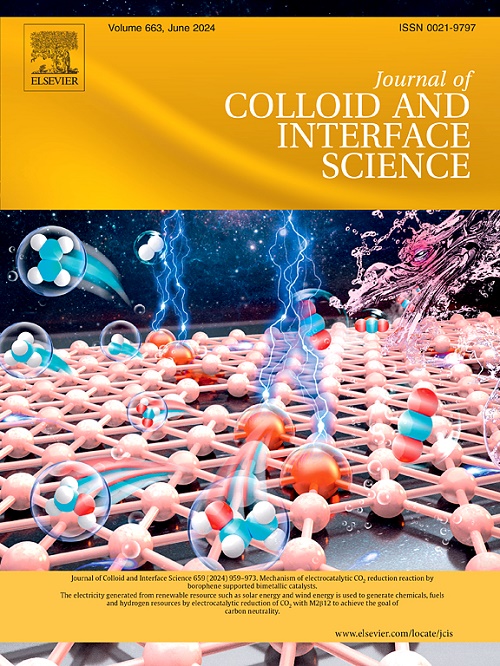Bio-assisted synthesis of cobalt-based heterostructures in carbon nanobelts for enhanced oxygen catalysis in Zn-air battery
IF 9.4
1区 化学
Q1 CHEMISTRY, PHYSICAL
引用次数: 0
Abstract
The delicate design and fabrication of transition metal-based heterostructures with abundant active sites are a crucial issue for achieving superior electrocatalytic properties. In this work, we introduce a novel bio-assisted strategy for assembling cobalt-based heterostructures on nitrogen and phosphorus codoped carbon nanobelts, which serve as highly efficient bifunctional oxygen catalysts. The fungus of Rhizopus is utilized to encapsulate the Co-CoTe within the in-situ formed nitrogen and phosphorus codoped carbon nanotubes (NPCNT), resulting in hairy nanobelts with a porous structure and excellent flexibility. Both experimental and theoretical analyses results reveal the superior geometric configuration, electronic structure, and the low energy barrier of the bio-Co-CoTe@NPCNT nanobelts. Benefitting from these advantages, the bio-Co-CoTe@NPCNT nanobelts demonstrate rapid kinetics, impressive catalytic performance, and high durability in both oxygen evolution and reduction (OER/ORR) reactions. The aqueous zinc-air batteries (ZAB) employing the prepared bio-Co-CoTe@NPCNT nanobelt cathode exhibit the stable cycling properties and good reliability. Furthermore, the solid-state ZAB demonstrates high reliability, pliability, and durability under various deformations.

求助全文
约1分钟内获得全文
求助全文
来源期刊
CiteScore
16.10
自引率
7.10%
发文量
2568
审稿时长
2 months
期刊介绍:
The Journal of Colloid and Interface Science publishes original research findings on the fundamental principles of colloid and interface science, as well as innovative applications in various fields. The criteria for publication include impact, quality, novelty, and originality.
Emphasis:
The journal emphasizes fundamental scientific innovation within the following categories:
A.Colloidal Materials and Nanomaterials
B.Soft Colloidal and Self-Assembly Systems
C.Adsorption, Catalysis, and Electrochemistry
D.Interfacial Processes, Capillarity, and Wetting
E.Biomaterials and Nanomedicine
F.Energy Conversion and Storage, and Environmental Technologies

 求助内容:
求助内容: 应助结果提醒方式:
应助结果提醒方式:


